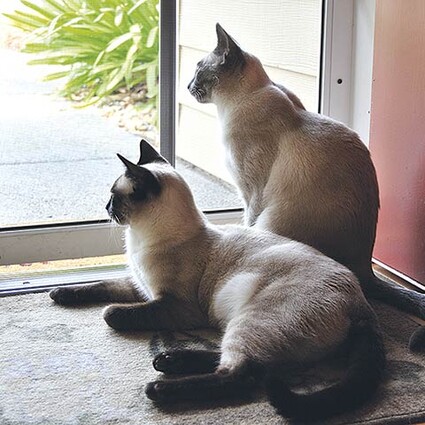Keep kitty away from the wildlife
Last updated 10/9/2019 at Noon
Researchers studied 529 bird species over the last half-century and produced the most comprehensive study ever done on North American birds, according to a recent article in the journal Science. Thanks to the decades of monitoring by researchers and bird enthusiasts across the continent — as well as weather radars — scientists had a huge amount of data to work with.
Grassland birds such as meadowlarks and northern bobwhites have declined by 53 percent since 1970 — a loss of 700 million adults in the 31 species studied. Shorebirds such as sanderlings and plovers are down by about one-third, according to the study.
Habitat loss is the primary driver here and is a human-caused issue, said the study’s co-author Peter Marra, director of the Georgetown Environment Initiative.
But, the unnatural toll that feral and free-ranging domesticated cats have on birds is more than you might realize.
The problem of how many birds are killed by outdoor cats did not flare into the public consciousness until about 25 years ago, with the publication of a pioneering study by Stanley Temple, professor emeritus of conservation and wildlife ecology at the University of Wisconsin–Madison. By radio-tracking cats and examining stomach contents and feces, Temple studied the hunting behavior and diet of free-ranging cats, then estimated how many of the animals lived in rural Wisconsin. His results showed that, yes, cats do kill birds—on average 5.6 per cat per year. He estimated that 1.4 million free-ranging country cats killed as many as 7.8 million birds each year statewide.
Traditional beliefs that cats need freedom to roam are fading in the light of statistics that indicate that indoor cats have a longer lifespan and better health. Many cat-lovers now understand that indoor cats are safer cats, while others still think that felines deserve freedom to run in the great outdoors.
The one surefire way to keep birds and other wildlife safe from domesticated cats is to keep cats indoors.
There are many good reasons to keep your kitty indoors:
More cats are killed by cars annually than are euthanized in U.S. animal shelters. Even the most careful driver cannot avoid hitting a cat that runs across the street in front of a car. Even so-called “safe” country areas are no guarantee for cats.
On average, an indoor cat lives 12-15 years and some cats can live much longer. In comparison, an outdoor cat’s life expectancy is less than five years.
During the spring and summer months, outdoor cats may encounter toxins that lurk almost everywhere, such as pesticides, home and garden products, car and motor products, and spoiled foods in the trash. Outdoors during the colder months, your furry friend might curl up against almost anything to stay warm, including car engines. Cats caught in moving engine parts can be seriously hurt or killed.
If your cat goes outside and you can’t keep her indoors – there are some things you can do to minimize the chances of it hunting wildlife. Even if you keep your cats indoors, your neighbors might not, or you might have feral stray cats in your neighborhood.
Here are some tips for keeping backyard birds and other wildlife safe from free-ranging cats.
•?Birds and small wildlife need cover and hiding places from cats, and at the same time they also need some open space around feeders and birdbaths to be able to spot cats before they get close enough to pounce. Place feeders and birdbaths at least 10 to 12 feet away from any potential hiding places for cats.
•?If an outdoor cat is staking out your bird feeder as hunting grounds, the responsible thing to do is to take your feeders down to protect the birds. Focus feeding birds naturally through native plants that provide seeds, berries and insects. Native plants won’t cause birds to congregate in high numbers in one spot every day like a feeder does, which is what attracts hunting cats.
•?Cats are natural climbers, so a fence isn’t going to be totally effective at keeping cats away, but it can help. A six-foot fence is too high for most cats to jump over and most won’t be able to climb it either if it’s made out of smooth wood or vinyl. Avoid plantings right up against the outside of the fence, which cats will use as ladder to get over the fence.
Cats are wonderful animals and make great pets, but the science is clear on the impacts of cats on wildlife populations. The only way forward is to work together to solve the problem. Talk to your neighbors. Be willing to compromise. Share your knowledge and love of cats and wildlife to effect positive change in your community.

















Reader Comments(0)